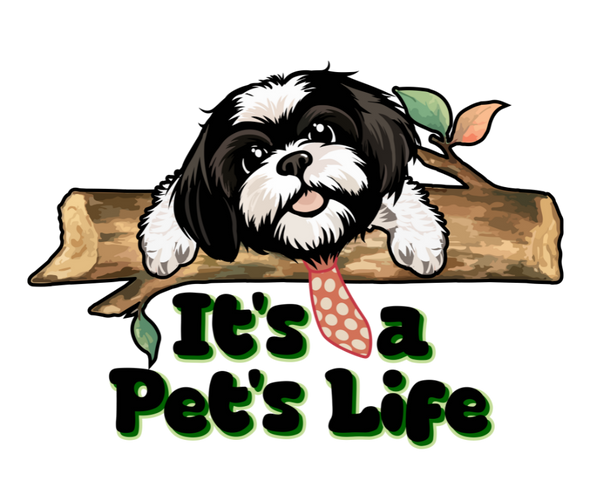
The Goldilocks Dilemma: Finding the Perfect Size Dog Bed
Share
The Goldilocks Dilemma: Finding the Perfect Size Dog Bed
You measured your dog. You checked the size chart. You ordered the “perfect” bed. It arrives, and your Great Dane is somehow crammed into what looks like a cat bed, or your Chihuahua is lost in an ocean of fabric. Dog bed sizing is apparently rocket science, and we’re all failing the exam. After returning five beds and finally finding “the one,” I’ve cracked the code on dog bed sizing.
Why Size Charts Lie
- Manufacturers measure beds differently:
- Some measure sleeping surface only
- Others include the bolsters
- Some measure external dimensions
- Others measure recommended dog weight
A “large” bed from one company is a “medium” from another. It’s clothing sizes all over again, but for dogs.
The Measuring Method That Works
Step 1: Observe Natural Sleep Position
Does your dog:
- Curl into a ball (Measure curled diameter)
- Stretch out fully (Measure nose to tail base)
- Sprawl like a starfish (Measure widest sprawl)
Step 2: Add the Comfort Zone
- Curlers: Add 8 12 inches to diameter
- Stretchers: Add 6 8 inches to length
- Sprawlers: Add 12 inches to width and length
Step 3: Consider the Edges
If the bed has bolsters, that’s not sleeping space. Subtract bolster width from total dimensions.
The Position Personality Test
The Donut Dog
Curls tight, nose to tail. Needs round or oval beds with raised edges. Can use smaller beds.
The Superman
Stretches out completely, legs extended. Needs rectangular beds, minimal bolsters.
The Side Sleeper
On their side, legs out. Needs length AND width. Often the trickiest to fit.
The Unpredictable Sleeper
Changes positions nightly. Need the largest option. Your wallet weeps.
My dog is all four depending on temperature, mood, and lunar phase.
Weight Recommendations Are Garbage
“Perfect for dogs 50 70 lbs!” Meanwhile, your 60 pound Greyhound is 90 percent legs and your 60 pound Bulldog is 90 percent chunk. Same weight, completely different bed needs.
Better Measurements:
- Height at shoulders
- Length from chest to tail base
- Circumference at widest point
- Actual sleeping measurements
Weight tells you nothing about how a dog occupies space.
The Multi Position Solution
Can’t figure out their style Get a bed that works for everything:
- Rectangular shape (versatile)
- Low or removable bolsters
- Size up rather than down
- Flat surface option
The Swiss Army knife of dog beds. Not perfect for anything, adequate for everything.
Common Sizing Mistakes
The Theyll Grow Into It Fallacy
Puppies need appropriately sized beds NOW. Too big beds don’t provide security. Buy multiple sizes as they grow.
The Cozy Is Better Myth
Dogs need room to adjust. Too small causes joint stress and poor sleep.
The One Bed Fits All Dream
Multiple dogs need multiple beds, even if they sleep together. Someone always gets the raw deal.
Breed Specific Considerations
Long Boys (Greyhounds, Dachshunds):
Need extra length, less width. Rectangle beds, minimal bolsters.
Chunk Masters (Bulldogs, Bassets):
Need width and support. Firm, wide beds with easy entry.
The Tiny But Mighty (Chihuahuas, Yorkies):
Like enclosed spaces. Can use cat beds successfully.
The Giants (Great Danes, Mastiffs):
Just buy a twin mattress. Seriously. Dog beds this size cost more than human furniture.
The Room Size Reality
That perfect bed means nothing if it doesn’t fit your space:
- Measure the intended spot
- Account for dog getting on off
- Consider traffic flow
-
Leave room for water bowl nearby
The number of people who buy beds that don’t fit their actual space is astronomical.
The Two Bed Solution
- Why You Need Two:
- Different rooms (living room bedroom)
- Different temperatures (cooling warming)
- Washing rotation
- Wear distribution
One bed is a recipe for disappointment when it’s in the wash and your dog gives you those eyes.
Age Adjusted Sizing
Puppies: Smaller beds they can grow into over 3 4 months
Adults: Full comfort size
Seniors: Size up for easier entry exit, consider lower profile
As dogs age, they need more space to adjust positioning for comfort.
The Test Drive Method
Before Committing:
Use blankets to mock up bed size
Watch where your dog naturally sleeps
Measure their actual space usage
Note seasonal changes (winter curling vs summer sprawling)
Two weeks of observation beats any size chart.
The Return Policy Protection
Always Check:
Return window (30 days minimum)
Condition requirements (keep tags on)
Return shipping costs
Exchange options
Buy from places with generous return policies. You’ll probably need it.
The Budget Size Trap
Bigger beds cost exponentially more:
Small: 30 50
Medium: 50 80
Large: 80 120
Extra Large: 120 200
Giant: Your mortgage payment
Factor this into getting a large breed dog. The bed budget is real.
This post was authored by the It’s a Pet’s Life team.
